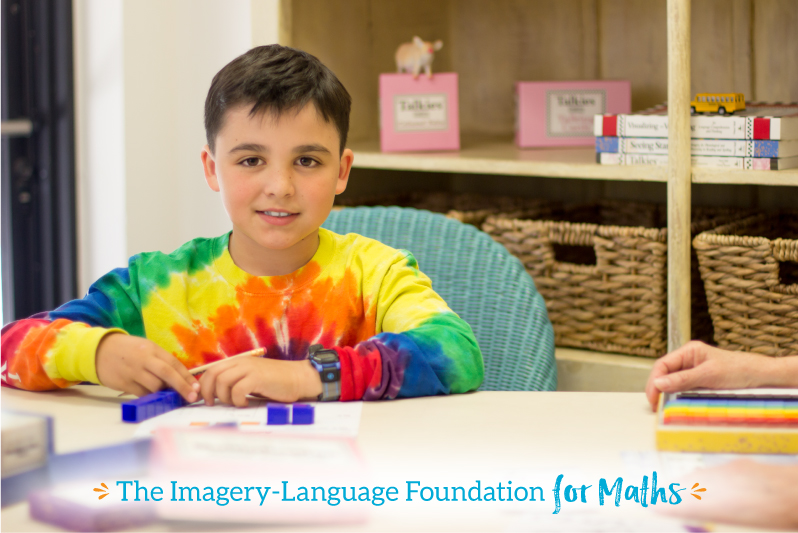
Many students can grasp addition and subtraction problems using maths manipulatives. But take away the concrete objects and their understanding seems to disappear.
Manipulatives are a very helpful visual representation, but maths students of all ages need to learn to visualise what numbers mean as well.
Mathematics is cognitive processing, or thinking, that requires both imagery and language. Imagery is fundamental to the process of thinking with numbers.
The primary cause of maths difficulties is a weakness in two areas: numeral imagery—the ability to visualise numbers—and concept imagery—the ability to process the gestalt (whole) from language. Individuals who demonstrate weaknesses in these areas often attempt to memorise maths facts instead of being able to think, reason, and problem solve with numbers.
People who are great at maths can easily visualise maths functions. The language of numbers turns into imagery and they “see” mathematical relationships. However, many individuals may experience an inability to image the concepts underlying maths processes. This causes weakness in the following:
- Learning maths facts
- Grasping mathematical relationships
- Following proper mathematical operations
- Solving word problems
- Estimating numerical values
- Understanding higher level maths
The following excerpt from On Cloud Nine® Maths by Nanci Bell and Kimberly Tuley, explains the importance of both concept and numeral imagery:
“To bring concept and numeral imagery to a conscious level as the missing link in maths instruction, On Cloud Nine integrates and applies the principles of Bell’s programs: Visualizing and Verbalizing for Language Comprehension and Thinking™ (V/V®) and Seeing Stars®: Symbol Imagery for Phonological and Orthographic Processing in Reading and Spelling (SI). As individuals become familiar with the concrete manipulatives, they are questioned and directed to consciously transfer the experienced to the imaged. They image the concrete and attach language to their imagery. The integration of imagery and language is then applied to computation. They develop the sensory-cognitive processing to understand and use the logic of mathematics in mental and written computation.”
The On Cloud Nine® Maths program stimulates an individual’s ability to image and verbalise the concepts underlying maths processes. Concept and numerical imagery are integrated with language and applied to maths computation and problem solving. There is emphasis on both mathematical reasoning and mathematical computation.
Explore our maths instruction, including Learning Centre results, here.
Educators: Find out how you can learn the steps of the On Cloud Nine® Program in one of our acclaimed professional development workshops, and teach your students how to “see” maths, here.





